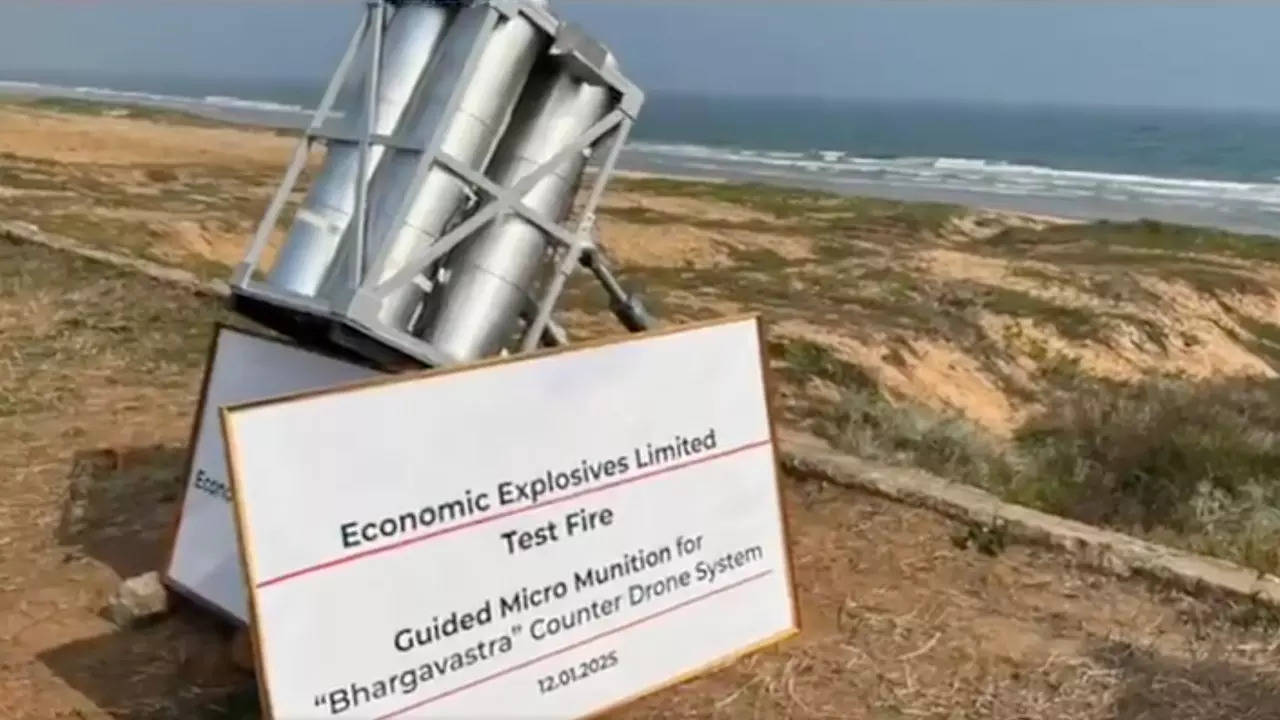India's Revolutionary Bhargavastra Micro-Missile System: A Game Changer in Drone Warfare?
The world of defense technology is abuzz with the recent successful testing of India's indigenously developed Bhargavastra micro-missile system. This isn't just another missile; it's a potential game-changer in countering the ever-growing threat of swarm drone attacks. Get ready to dive into the details of this groundbreaking technology that's making waves globally and transforming how we approach modern warfare.
The Bhargavastra Micro-Missile System: A Closer Look
Developed to neutralize the persistent threat of large-scale drone attacks, the Bhargavastra system has already shown impressive results. The recent successful test firing at the Gopalpur Seaward Firing Ranges saw the micro-missiles successfully engaging virtual targets beyond 2.5 km. This impressive range, combined with its cost-effectiveness, makes it a far more practical solution compared to the expensive air defense systems traditionally used against smaller aerial threats. Imagine this: affordable protection against the swarming menace of drone attacks, freeing up more expensive, advanced systems to deal with bigger, more sophisticated threats. This technological marvel signifies India’s commitment to securing its airspace and enhancing its overall defense capabilities.
Cost-Effectiveness: A Key Advantage
The real beauty of the Bhargavastra system lies in its affordability. With the increasing availability of inexpensive drones, particularly when used in swarms, there was an urgent need for cost-effective countermeasures. This system directly addresses this gap and provides an economical alternative, without compromising effectiveness. This is pivotal for countries aiming to defend their critical infrastructure from potentially catastrophic drone attacks while maintaining their existing budget allocations for critical defense needs.
Advanced Targeting System: The Brains of the Operation
Beyond its cost-effectiveness, the Bhargavastra system utilizes cutting-edge technology for precision targeting. The advanced system identifies and neutralizes multiple drones accurately and efficiently even in challenging environmental conditions. The technology involved is both complex and adaptable, a reflection of India’s burgeoning expertise in military technology. Further details on the specifics are still limited, and there is much left to the imagination as to just how accurate and potent this system truly is. However, what's already publicly available has created tremendous anticipation and expectation among both domestic and international military analysts.
Implications for Future Warfare
The implications of the successful Bhargavastra tests extend far beyond India’s borders. It signifies a significant advancement in countering the asymmetric threat posed by low-cost, easily available drone technology. Countries around the world now have access to a model for creating effective and comparatively inexpensive drone defense systems. This opens up avenues for enhanced collaborative research and global partnerships towards bolstering overall international security. Many nations could readily benefit from the affordability and superior efficacy provided by a similar system.
A Paradigm Shift in Defense Strategies
The Bhargavastra system's impact extends to a possible re-evaluation of existing defense strategies. Its successful integration into the Indian armed forces could trigger a broader adoption of such cost-effective solutions worldwide. It could represent a change in the way smaller countries design and build defense systems. Furthermore, this also puts the focus back onto research and development efforts and creating an ecosystem of smaller, more manageable, systems for addressing multiple threats. It emphasizes versatility and efficiency without breaking the bank.
Global Security Implications
It's evident that the implications of India's breakthrough have resonated internationally. The development and testing of such effective technology represent a considerable step towards improved global security, allowing smaller, less affluent nations to have superior access to essential technology to defend their air space and national interest. Such technology might prove invaluable in countering various security threats ranging from domestic to regional conflicts and terrorism, leading to a world with a potentially enhanced sense of security.
The Road Ahead: Testing and Integration
Following these highly successful initial trials, the Bhargavastra system is slated for comprehensive testing later this year. This phase will provide invaluable feedback on real-world deployment strategies and capabilities and will surely refine any remaining technical challenges before the system's planned integration into the Indian armed forces. Once deployed, the system’s impact could be transformative, reshaping future defense planning globally.
Future Development and Enhancements
The creators and developers behind the Bhargavastra technology are expected to continue enhancing and refining the system based on these testing results. As it moves toward full operational use, future improvements might include enhancements such as extended range, improved targeting precision, greater resilience against electronic countermeasures, and possibly the integration of Artificial Intelligence for advanced autonomy and strategic decision making.
Take Away Points
- India's successful testing of the Bhargavastra micro-missile system marks a significant advancement in counter-drone technology.
- Its cost-effectiveness and accuracy make it a game-changer in the fight against swarm drone attacks.
- The system's successful deployment will likely lead to a re-evaluation of global defense strategies and an increased emphasis on the development and implementation of similar technologies.
- The technology's implications extend to the enhancement of global security, with implications that spread throughout the world.









